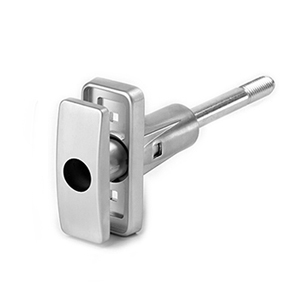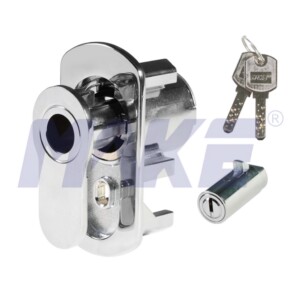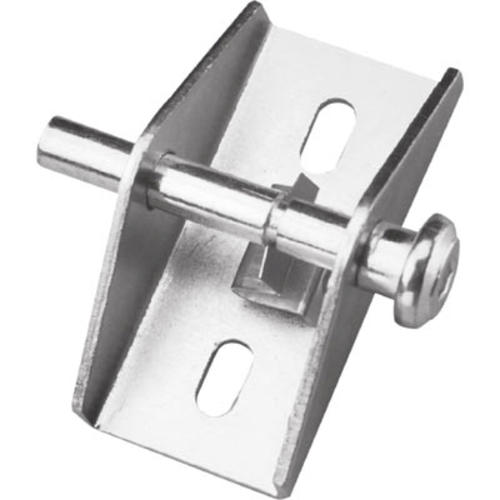Surface Treatment Methods of Locks
To satisfy the needs of various applications, it is available for us to process locks with a wide range of surface treatment methods which are to form a layer with one or more special properties on the surface of locks through physical or chemical methods. Surface treatments can improve the appearance, texture, function and other aspects of the product and to a certain extent enhance the practicability and decorative effect. Here are some common surface treatment methods of locks.
Chrome Plated Treatment
Chrome plating is a process of plating a thin chromium layer on the surface, which is usually used for decoration or plays a protective role. Excellent chrome-plated products are as expensive as the ones in stainless steel which may be replaced due to the greater demand on strength by the former. The chromium layer possesses a fine finish and a good decorative effect. Usually, possessing stable chemical properties, chromium is capable of improving the hardness and resistance of locks and ensuring the color and shine of locks will not change in a humid environment.

Nickel Plated Treatment
With strong inactivated capability and good chemical stability, nickel is easy to form an oxide film on the surface of locks. Nickel-plated products are generally applied to the equipment with high anti-corrosion and electrical conductivity requirements, which are anti-friction and anti-rust. The nickel plating layer owns high stability in the air and is not easy to change its color, being able to resist the corrosion from the atmosphere, alkali and some kinds of acids. It also has excellent polishing with long-lasting gloss and can strengthen the abrasive ability of locks.

Zinc Plated Treatment
As the important surface protection and anti-rust measure, zinc plating treatment is to plate a metal film on the surface according to the principle of electrolysis so that the oxidation and rust can be prevented and the electrical conductivity, reflecting, corrosion resistance and beauty of products can be improved. This is an economic and effective method with a range of applications. Zinc-plated products are stable and difficult to change colors in a dry environment. In the wet condition, the surface will form a film of basic zinc carbonate to protect the inside from being corroded. And if corrosion occurs, the zinc-plated layer will be destroyed first, preventing the iron layer from damage.

Chrome Plated Treatment
Chrome plating is a process of plating a thin chromium layer on the surface, which is usually used for decoration or plays a protective role. Excellent chrome-plated products are as expensive as the ones in stainless steel which may be replaced due to the greater demand on strength by the former. The chromium layer possesses a fine finish and a good decorative effect. Usually, possessing stable chemical properties, chromium is capable of improving the hardness and resistance of locks and ensuring the color and shine of locks will not change in a humid environment.

Nickel Plated Treatment
With strong inactivated capability and good chemical stability, nickel is easy to form an oxide film on the surface of locks. Nickel-plated products are generally applied to the equipment with high anti-corrosion and electrical conductivity requirements, which are anti-friction and anti-rust. The nickel plating layer owns high stability in the air and is not easy to change its color, being able to resist the corrosion from the atmosphere, alkali and some kinds of acids. It also has excellent polishing with long-lasting gloss and can strengthen the abrasive ability of locks.

Zinc Plated Treatment
As the important surface protection and anti-rust measure, zinc plating treatment is to plate a metal film on the surface according to the principle of electrolysis so that the oxidation and rust can be prevented and the electrical conductivity, reflecting, corrosion resistance and beauty of products can be improved. This is an economic and effective method with a range of applications. Zinc-plated products are stable and difficult to change colors in a dry environment. In the wet condition, the surface will form a film of basic zinc carbonate to protect the inside from being corroded. And if corrosion occurs, the zinc-plated layer will be destroyed first, preventing the iron layer from damage.


